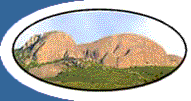Frank Turner is a member of the Cape-based Quagga Project. His game reserve, Bontebok Ridge in the foothills of the Limietberg Mountains, is one of eleven breeding sites in the Cape and three within the Wellington-Hermon district.
The members of the Quagga Project hope to retrieve those genes from the Plains Zebra (Equus quagga) that were responsible for the quagga’s distinctive colouring, through a process of selective breeding.
The Plains Zebra are found throughout Africa from Ethiopia in the north to South Africa in the south.
The quagga was once a subspecies of these zebra and had distinctive fawn to chestnut colouring with less contrasting stripes, an unstriped rump and legs, and a reddish to brown muzzle.
The last quagga died in the Amsterdam Zoo in 1883.
Herds of quagga once roamed throughout the Karoo, southern Free State and Eastern Cape, and were hunted to extinction in the 19th century by trophy hunters and stock farmers.
The Quagga Project was established in 1987 with nine zebras selected from herds in the Etosha National Park in Namibia.
Frank explains that scientists had originally thought that the quagga was a separate species, but when a taxidermist from the SA Museum in Cape Town found a match between the DNA found on 100- year-old quagga skins and DNA from modern day Plains Zebra, the possibility of bringing the extinct quagga back to life through selective breeding became a very real possibility.
Since the project started in 1987 members have managed to breed just over 80 quaggas. All births are recorded in a stud book, and foals that do not show the quagga-like markings are sold as zebra.
Bontebok Ridge’s initial herd consisted of one stallion and two mares. They have since had six successful foalings and now keep a herd of seven quagga.
The quagga share the nature reserve with wildebeest, hartebeest, springbuck, eland, bontebok, rheebok and duiker.
Stock numbers are managed to prevent overgrazing. This is particularly relevant because the reserve falls within a Renosterveld Conservancy.
“There is only 4% of the original Cape Renosterveld left, which makes this conservancy the largest single patch of Renosterveld in the world.”
Frank Turner’s nature reserve is part of the farm Limietrivier. He explains that the Limiet River area once served as the border between the Khoisan and free burgher stock farmers.
He started farming on Limietrivier some 40 years ago, building dams, planting 60 hectares of vines, and grazing some sheep and cattle. In time he decided to convert the top part of his farm into a nature reserve.
Although the project has a romantic appeal, Frank is quick to point out that the quaggas can be quite difficult characters.
“The stallions especially can be very arrogant and even aggressive.
“We had a stallion called Ettienne that killed some of our bontebok lambs, and when he started killing the eland calves, we decided it was time to move him off to another farm where he could do less damage.”
Frank’s young stallion Tom also caused a few anxious moments when he decided to gate-crash Frank’s daughter’s wedding.
“There were 140 guests, a helicopter, a photographer and my daughter in her wedding dress, and right in the middle of all of this Tom decided to come and investigate.
“Eventually he minced off, but stayed long enough to provide a wonderful background


